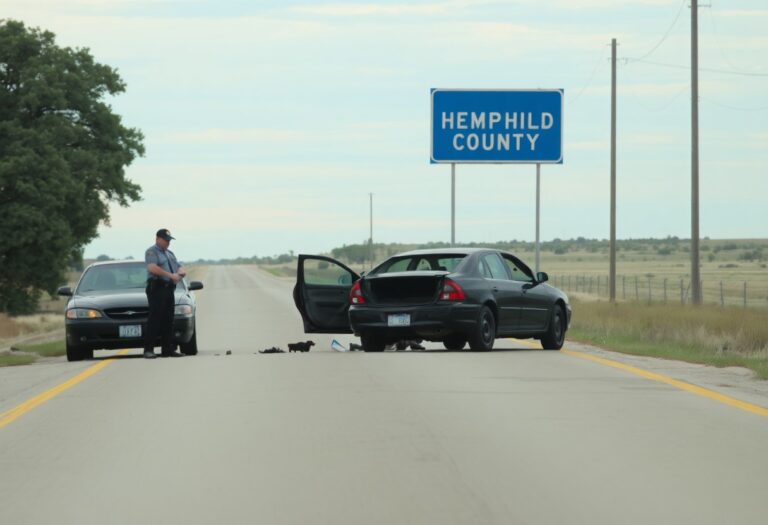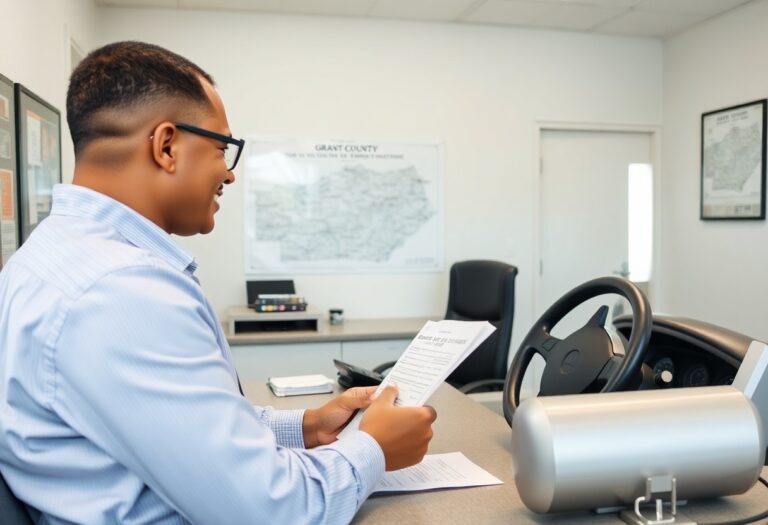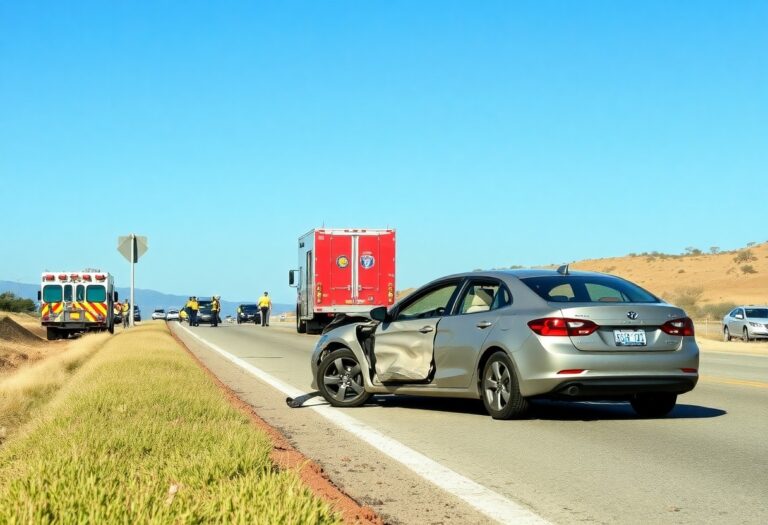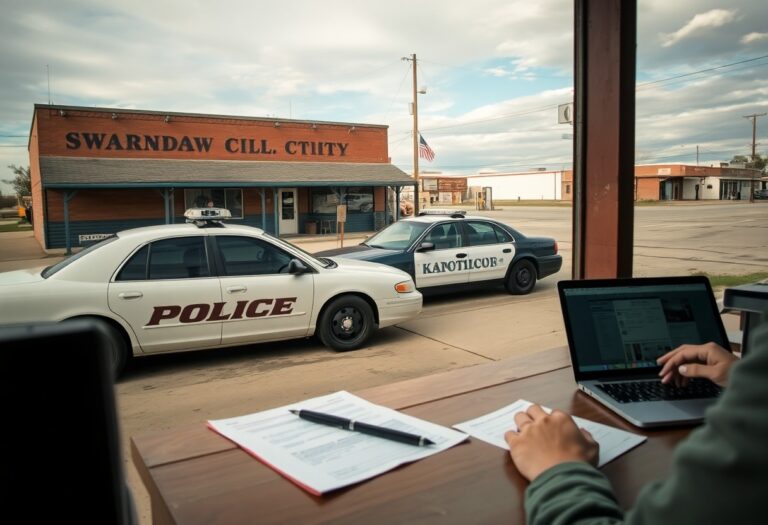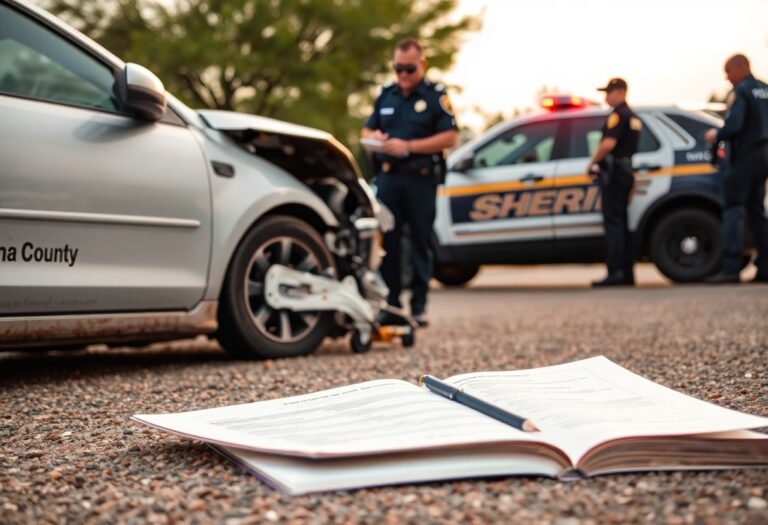It’s crucial to know how to navigate the aftermath of a car accident in Jessamine County, Kentucky. This guide will walk you through the key steps you must take to report the incident accurately and protect your interests. You’ll learn about collecting important evidence, filing a report with local authorities, and communicating with your insurance provider. By following these steps, you can ensure that your rights are upheld and that you receive any assistance needed to recover from the incident.
Navigating the Immediate Aftermath of a Collision
Following a vehicle collision, your immediate actions set the tone for resolving the situation. Begin by assessing injuries to yourself and others involved, then ensure the vehicles are in a safe position if possible. Exchanging information with other drivers, documenting the scene, and contacting your insurance provider should be your next steps. Finally, gather all relevant documents and witness contacts to support your claim. Properly handling these initial moments can significantly influence the outcome of subsequent legal and insurance processes.
Securing Safety: Prioritizing Health and Safety on Scene
Prioritizing health and safety is your first responsibility after a collision. Ensure that you and passengers are out of harm’s way, moving to a designated safe zone if necessary. Turn on hazard lights, and if it’s safe, place warning triangles or cones to alert oncoming traffic. Check for injuries and call for medical assistance if anyone requires immediate care. If your vehicle is immobilized, avoid standing nearby, as this can increase the risk of further accidents.
Legal Obligations: When and How to Contact Law Enforcement
Contacting law enforcement after a collision is often mandated by law, especially when injuries occur or damages exceed a certain amount. In Jessamine County, you should dial 911 for emergencies, or reach out to local law enforcement for non-emergent situations. Provide accurate information about the accident’s location, the number of vehicles involved, and any injuries. Officers will arrive to document the incident, creating an official report that can be valuable for insurance claims and legal proceedings.
In Jessamine County, if the damages appear to surpass $1,000 or anyone is injured, you must file a police report. This documentation serves as a critical piece for insurance claims and can protect your interests in case of disputes. Officers will take statements, gather evidence, and often provide a report number, which you should keep for follow-up purposes. The police report can also contain vital details about the accident, which can help clarify fault later on. Being prompt and detailed when you report the incident will ensure your case is thoroughly documented and can support any future claims you may need to make.
Essential Documentation for Your Car Accident Report
Completing your car accident report accurately relies heavily on appropriate documentation. This includes gathering all relevant details such as driver and vehicle information, insurance policies, and police reports. The more comprehensive your documentation, the easier it will be to navigate insurance claims and potential legal actions. Proper documentation not only serves to bolster your case but also ensures all parties involved are on the same page.
Gathering Vital Information: Who, What, and Where
Start by collecting important details regarding the accident. This includes the names, contact information, and insurance details of all drivers and witnesses involved. Document the time and location of the incident, as it can help establish context. Be thorough; even seemingly minor details can be pivotal in reconstructing the events surrounding the accident.
The Importance of Photographic Evidence and Witness Accounts
Visual evidence serves as a powerful tool in your car accident report. Photos of the scene, vehicle damage, and any visible injuries create a vivid account of the incident. Additionally, securing witness statements provides objective testimonies that can solidify your narrative, offering a well-rounded view of the event. When these elements are documented, they become instrumental in supporting your claims.
Photographic evidence may include multiple angles of each vehicle involved, any nearby traffic signs or signals, and even road conditions, which all contribute to the overall picture of the accident scene. Witness accounts are equally valuable; they can corroborate your version of events and challenge opposing claims. Ensure that you get their contact information as well for any follow-up. Together, these pieces form a strong foundation for your report and can significantly impact the outcome of any insurance negotiations or legal disputes.
Understanding Insurance Requirements in Jessamine County
Having a solid understanding of the insurance requirements in Jessamine County is important for safeguarding yourself financially. You are required to carry a minimum amount of auto liability insurance, which protects you in the event of an accident. The specifics include coverage for bodily injury and property damage, ensuring you are compliant with local regulations while also protecting your assets in case of a mishap.
The Role of Liability Insurance: State Regulations You Should Know
In Jessamine County, liability insurance serves as a financial shield, covering expenses related to bodily injury and property damage resulting from accidents you cause. The minimum required coverage is typically $25,000 for injury per person, $50,000 for all injuries per accident, and $10,000 for property damage. These state regulations are designed to protect both drivers and victims, promoting responsible driving practices.
How to File a Claim: Step-by-Step Instructions
To navigate the claims process smoothly, begin by gathering all relevant documentation related to the accident, such as police reports and witness statements. Next, contact your insurance provider as soon as possible to report the incident, providing them with all necessary details. They will guide you through the paperwork, assess the damages, and help you secure compensation for your losses.
Step-by-Step Instructions for Filing a Claim
| Step | Action |
|---|---|
| 1 | Gather necessary documentation (accident report, photos, etc.) |
| 2 | Contact your insurance company to report the accident |
| 3 | Provide all required information regarding the incident |
| 4 | Follow up on necessary repairs and medical claims |
| 5 | Keep track of all communications with your insurer |
Filing a claim may seem overwhelming, but breaking it down into manageable steps can simplify the process. After reporting the accident, your insurer will usually assign an adjuster to review your case. Maintaining documentation of all communications, claims submitted, and invoices received ensures an organized approach. Additionally, don’t hesitate to reach out for assistance if needed; resources are available to help guide you through any complexities that arise in this process.
Dealing with Claims Adjusters: Strategies for Success
Successfully navigating discussions with claims adjusters is necessary for maximizing your compensation. These professionals are trained to minimize payouts, so approaching your conversations strategically can make a significant difference. Focus on maintaining a clear, factual representation of your accident and injuries. Prepare to assertively present your evidence, showing both your understanding of the situation and the merits of your claim. This level of preparedness not only establishes your credibility but can significantly influence the adjuster’s position during negotiations.
Effective Communication: Presenting Your Case Clearly
Articulate your narrative concisely and logically when discussing your case with the claims adjuster. Employ clear language and avoid jargon that may confuse or detract from your main points. Present key facts about the accident, emphasizing the impact on your health, emotional well-being, and financial situation. Utilizing organized documentation and evidence will reinforce your arguments, ensuring your case is understood and taken seriously.
Common Pitfalls: What Not to Say During Claim Negotiations
Avoiding certain phrases during negotiations can prevent undermining your case. Words of self-doubt or admissions of fault can significantly weaken your claim. For instance, stating that the accident was “partly your fault” can lead adjusters to reduce your settlement by attributing shared blame. Additionally, be cautious about discussing your medical status or prognosis too openly, as these comments can be misinterpreted or used against you.
Specific statements can inadvertently compromise your stand during claim negotiations. Admitting to any form of fault, even to appear cooperative, can make it problematic for your case. Adjusters may latch onto claims about your recovery time or pre-existing conditions, arguing that they diminish the extent of your current injuries. Instead, steer the conversation towards factual evidence backed by your documentation, ensuring your narrative stays focused on building your case while avoiding ambiguity and uncertainty.
Seeking Legal Assistance: When Is It Necessary?
Car accidents can lead to complex situations that may require legal expertise, especially when injuries or significant damages are involved. If your case is disputable, involves multiple parties, or you encounter resistance from insurance companies, seeking a lawyer could be imperative. A legal professional can help navigate the intricacies of your case, ensuring you receive fair compensation for your medical bills, lost wages, and other losses.
Evaluating the Need for Legal Representation: Red Flags to Watch For
Several indicators might signal the need for a lawyer in your accident case. If you’re facing serious injuries, the other party disputes liability, or significant damages are involved, these are red flags. Additionally, if the insurance company is unwilling to offer a reasonable settlement, seeking legal representation can help protect your interests.
Advantages of Hiring a Local Attorney with Car Accident Expertise
Hiring a local attorney who specializes in car accidents offers distinct advantages. These professionals possess in-depth knowledge of local laws, court systems, and often have established relationships with judges and insurance adjusters. Their experience ensures you won’t miss vital deadlines and helps position your case for maximum compensation.
Partnering with a local attorney can markedly increase your chances of a favorable outcome. For instance, an attorney familiar with Jessamine County’s legal landscape understands specific regulations and precedents that can influence a case. Their connections within the community often lead to more effective negotiations with insurance companies. Additionally, local attorneys typically offer personalized service and quick response times, which can be critical in managing your case efficiently.
Summing up
With this in mind, navigating the process of filing a car accident report in Jessamine County, Kentucky, can be straightforward if you follow the appropriate steps. Ensure that you document all necessary information at the scene, gather witness statements, and understand the timeline for submitting your report. This proactive approach not only helps clarify the situation but also supports your case in any subsequent claims. By being organized and informed, you can effectively manage the aftermath of a car accident and protect your interests.








